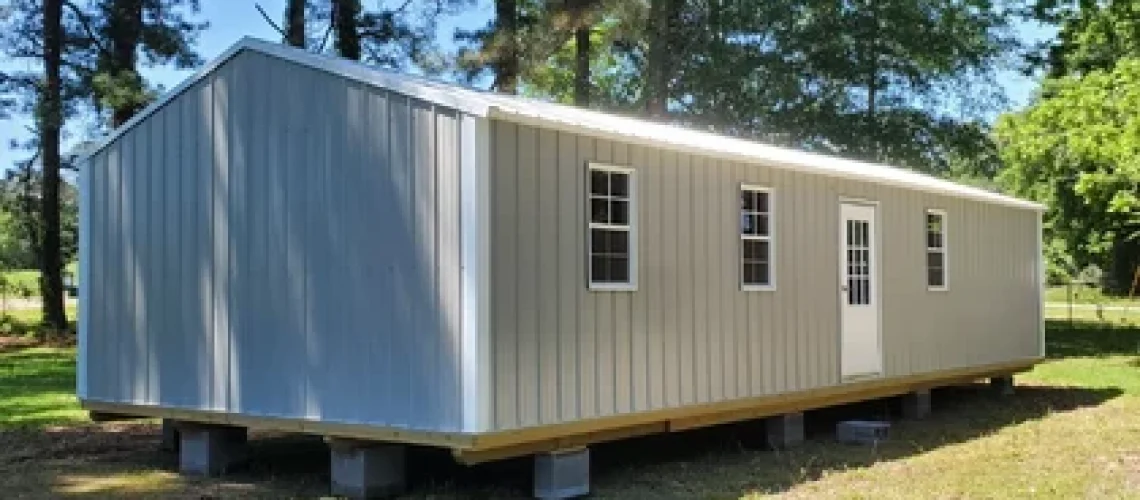Tiny homes have captured the attention of many seeking affordable, sustainable, and minimalist living. But can they accommodate families? Absolutely. While the idea of raising a family in a small space may seem daunting, the benefits often outweigh the challenges. In this blog post, we’ll explain how tiny homes can be an excellent choice for families and provide you with practical tips for making it work.
Benefits of Tiny Homes for Families
- Affordability: According to the Tiny Home Industry Association, the average cost of a tiny home is significantly lower than that of a traditional home. For families grappling with rising housing costs, tiny homes offer an affordable alternative, allowing them to allocate more resources to other priorities such as education and experiences.
- Intentional living: Living in a tiny home encourages families to embrace minimalism and prioritize experiences over possessions. By simplifying their lifestyle, families can foster closer bonds, spend more quality time together, and focus on what truly matters.
- Flexibility: Tiny homes offer unparalleled flexibility, allowing families to live more nomadically if desired or to adapt to changing circumstances such as job relocations or life events. This flexibility can provide a sense of freedom and adventure, enriching family life in unexpected ways.
Design Considerations for Family-Friendly Tiny Homes
- Multi-functional spaces: When space is at a premium, every square inch counts. Designing multi-functional spaces that can serve multiple purposes is key to maximizing usability. For example, a dining table that doubles as a workspace or a sofa that converts into a guest bed can help optimize space without sacrificing functionality.
- Storage solutions: Adequate storage is essential for maintaining a clutter-free environment in a tiny home. Incorporating creative storage solutions such as built-in cabinets, under-bed storage, and wall-mounted shelves can help maximize space and keep belongings organized.
- Safety features: Safety should be a top priority when designing a tiny home for families, especially those with young children or pets. Installing childproof locks, securing furniture to the walls, and using non-toxic materials are essential considerations to ensure a safe living environment.
- Outdoor living spaces: When space indoors is limited, outdoor living areas can provide much-needed breathing room. Whether it’s a patio, deck, or shed that can be used for additional storage, incorporating outdoor spaces into the design of a tiny home can expand the living area and enhance the overall quality of life for families.
Tips for Making it Work
- Establishing routines: Establishing daily routines can help create a sense of structure and normalcy in a tiny home. Setting aside dedicated times for meals, work, and relaxation can help minimize conflicts and maximize productivity.
- Clear communication: Open communication is essential for living in a small space. Family members should feel comfortable expressing their needs and concerns and working together to find mutually acceptable solutions.
- Embracing minimalism: Embracing a minimalist mindset is essential for thriving in a tiny home. Encourage family members to declutter regularly, prioritize essential items, and let go of unnecessary possessions that only serve to clutter the space.
- Outdoor activities: Take advantage of nearby parks, playgrounds, and recreational areas to provide opportunities for outdoor play and exploration. Engaging in outdoor activities can help alleviate feelings of cabin fever.
Common Concerns
- Privacy: While privacy may seem elusive in a tiny home, there are strategies for maintaining personal space. Whether it’s using curtains, dividers, or designated quiet zones, finding creative solutions can help ensure that each family member has a sense of privacy.
- Socialization: Contrary to popular belief, living in a tiny home doesn’t have to mean sacrificing social connections. Many tiny home communities offer opportunities for networking, support, and camaraderie, providing a sense of belonging and community for families.
- Education: For families with school-aged children, education is a primary concern. Fortunately, there are numerous resources available for homeschooling, online learning, and finding nearby schools, ensuring that children receive a quality education regardless of their living situation.
While living in a tiny home with a family certainly comes with its challenges, the benefits often far outweigh the drawbacks. By embracing affordability, intentional living, and flexibility, families can create a fulfilling and enriching lifestyle in a tiny home.


